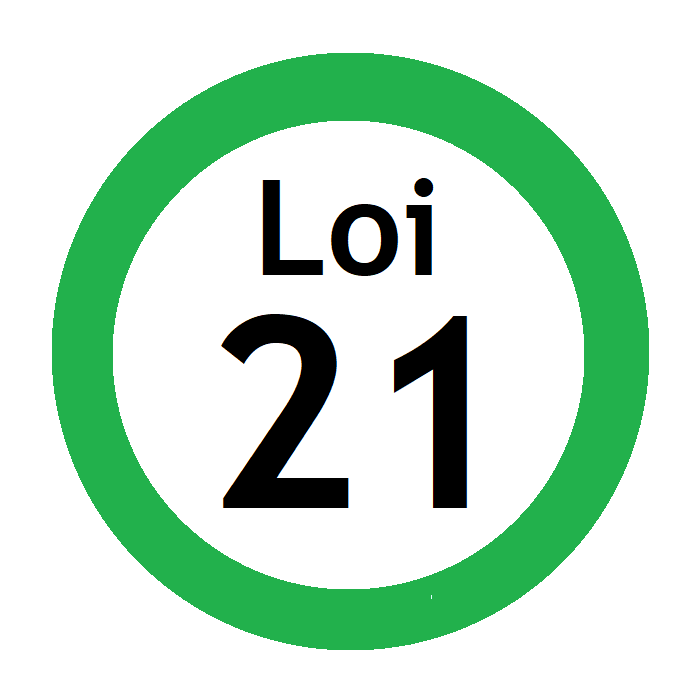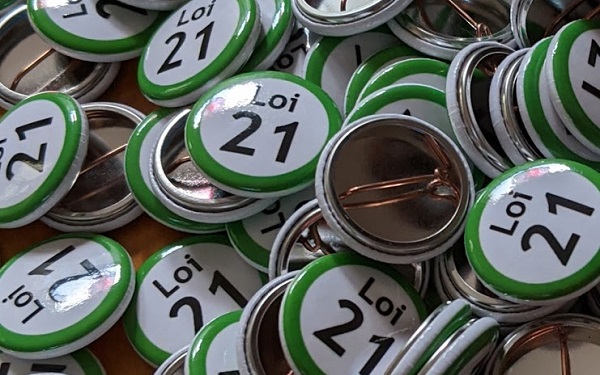2020-12-16
The wearing of religious symbols by civil servants and teachers on duty is a form of unacceptable religious advertising and an undeserved privilege granted to believers.
Sommaire en français Le port de signes religieux par les fonctionnaires et enseignant(e)s au travail est une forme de publicité religieuse inacceptable et un privilège indu accordé aux croyant(e)s. Voir mon blogue précédent Le prosélytisme passif.
The recent (2020-12-08) press release from Atheist Freethinkers gives the following explanation of the importance of banning State employees from wearing religious symbols:
[…] to allow civil servants and schoolteachers to indulge in ideological displays while on the job, simply because their ideology is religious, constitutes an unjustifiable privilege for religions. The consequences of this privilege are (1) an infringement on the freedom of conscience of users of social services and students in public schools, by exposing them to passive proselytism and indoctrination which these partisan religious manifestations exemplify; and (2) […]
One of the strategies of opponents of Bill 21, that is, anti-secularists, is to deny that passive proselytism even exists. To deny the reality of this phenomenon is very dishonest and in extremely bad faith. This is obvious.
When we are exposed to advertising on television, or in a print magazine, or on a billboard, we are being targeted by passive proselytism of the commercial variety. No-one can deny the effectiveness of this proselytism—and even less so its very existence! Businesses spend millions of dollars on such publicity—because it works.
If we allow civil servants in the public service or in schools to wear and display religious symbols while on the job, then we are dealing with passive proselytism of the religious type. Just replace the kippah, crucifix or hijab with a large promotion for McDonald’s or any other product for sale, displayed on the clothing of the civil servant, and the result is an advertisment which is obviously unacceptable. The kippah, crucifix and hijab similarly constitute unacceptable publicity in this context.
the purpose of religious proselytism is not necessarily to convert anyone, just as the goal of commercial advertising is not always to sell a product directly.
We must keep in mind that the purpose of religious proselytism is not necessarily to convert anyone, just as the goal of commercial advertising is not always to sell a product directly. Instead, the purpose is often to promote a particular brand or ideology, to normalize or trivialize the presence of that brand, so that it will be accepted and recognized by the public who are exposed to it.
In fact, a common practice among anti-secularists is to insist on a very narrow definition of the word proselytism, limiting it to mean the intention of converting others to the religion of the symbol worn. This is usually followed by a demand that quantitative studies be used to prove that such symbols do indeed have a proselytic effect. This is completely illogical.
In November 2020, Patrick Taillon testified before Quebec Superior Court as an expert witness for the Attorney-General of Quebec (AGQ) in the case Hak versus AGQ. In a radio interview with Antoine Robitaille, Taillon explains that, in 2015 when the Supreme Court of Canada endorsed the ban on prayers at municipal council meetings of the city of Saguenay, there was no requirement for quantitative studies of the effect of prayers on those persons who attended the meetings. The Court similarly did not require that the atheist complainant prove that the prayer could have converted him to Christianity. The wearing of religious symbols by agents of the State constitutes a similar situation. It is not necessary to prove explicitly that religious symbols have an effect on those exposed to them, especially if those persons are children.
[…] internal religious proselytism—that is, proselytism targeted at people of the same religion as the wearer of the symbol.
It is also important to recognize the importance of internal religious proselytism—that is, proselytism targeted at people of the same religion as the wearer of the symbol. This is generally the purpose of the Islamic veil, to send the message that the woman wearing it is a good, pure Muslim, while those Muslim women who do not wear the veil are bad, impure Muslims who deserve to end up in hell and should therefore adopt the veil in order to avoid that fate.
To allow teachers to wear religious symbols is tantamount to violating the right of pupils to an education free of indoctrination, in an environment free from proselytism. No quantitative study is required. The principle of secularism—in particular the principle of separation between religion and State—is sufficient to justify a ban.
the burden of proof is on such anti-secularists.
If the opponents of Bill 21 wish to grant religious believers the privilege of being allowed to engage in religious advertising while on the job, the burden of proof is on such anti-secularists. It is they who must provide proof of their claim that pupils will be unaffected.
Bill 21 establishes a reasonable compromise between the rights of State employees on the one hand and the rights of students and users of civil services on the ther hand.
Next blog: The Swiss Face-Covering Ban is About Deterring Religious Fanaticism

